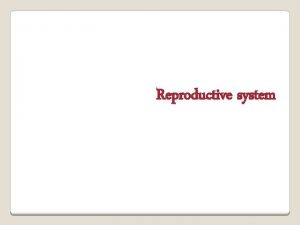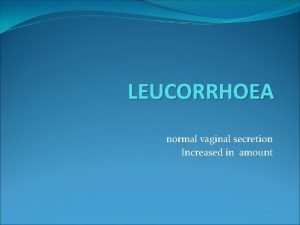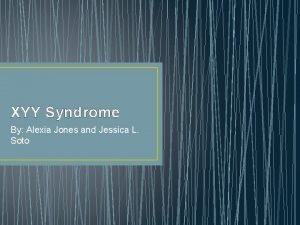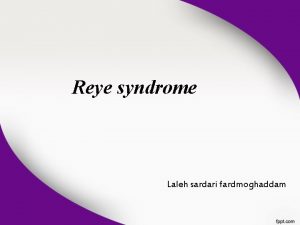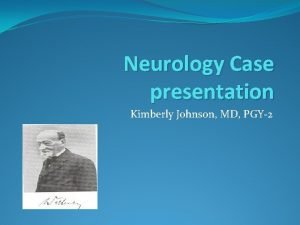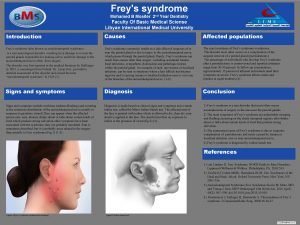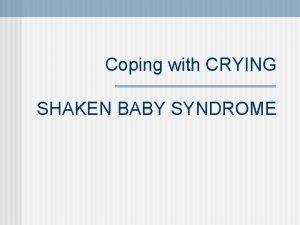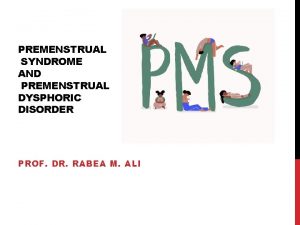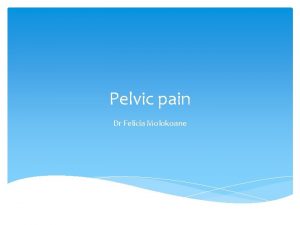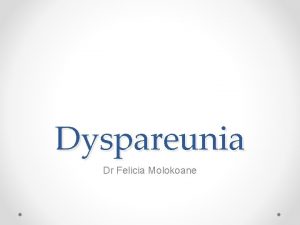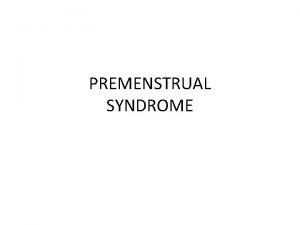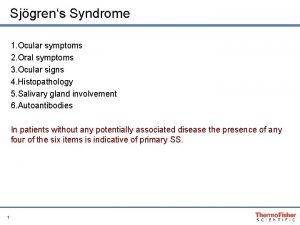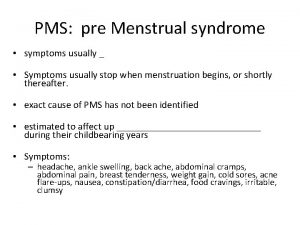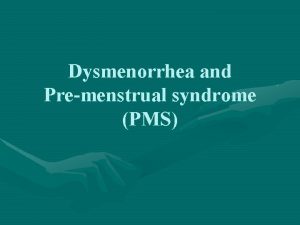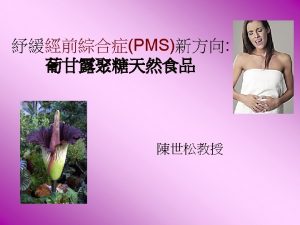PREMENSTRUAL SYNDROME Dr Felicia Molokoane INTRODUCTION Premenstrual symptoms









- Slides: 9

PREMENSTRUAL SYNDROME Dr Felicia Molokoane

INTRODUCTION Premenstrual symptoms occur in 95% of all women of reproductive age PMS occurs in 5% of those women Terminology for premenstrual disorders has become complex � PMS commonly used � PMT is the lay term � PMDD is the extreme

DEFINITION Recurrent psychological or somatic symptoms or both, recurring during luteal phase and resolving by end of menstruation

AETIOLOGY Unknown Seen in women of reproductive age, and is not seen before puberty, during pregnancy or after menopause.

DIAGNOSIS For the diagnosis of PMS, the symptoms must � Occur in the luteal phase of the cycle � Resolve by end of menstruation � Be severe enough to have major impact on normal functioning and � Have occurred in at least 4 of the 6 previous cycles

The character of the symptoms is less important than their timing and severity

MANAGEMENT PMS does not seem to be caused by an endocrine imbalance. Assessment � History: regularity of menstrual cycle � Physical examination � FBC, U&E, TSH Record the symptoms for 2 months � Calendar for premenstrual experiences

DSM IV CRITERIA FOR PMDD Prospective documentation of physical and behavioural symptoms being present most of the preceding year Five or more symptoms must have been present during the week prior to menses Resolve few days after menses starts

DSM IV CRITERIA FOR PMDD Feeling of sad, hopeless, or self deprecating Feeling tense, anxious or on edge Marked lability of mood interspersed with frequent tearfulness Persistent irritability, anger, and increased interpersonal conflicts Decreased interest in usual activities Difficulty concentrating Feeling fatigue Marked changes in appetite
